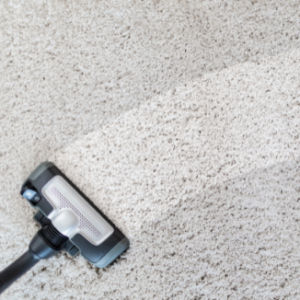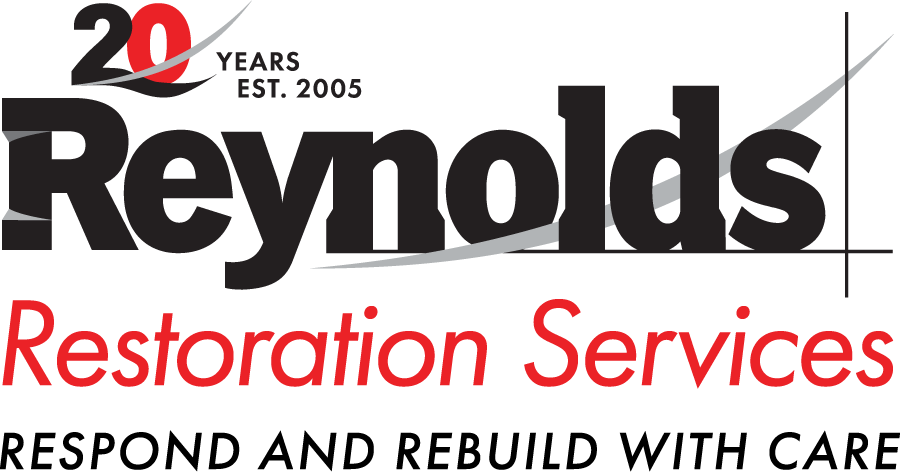 Water damage is one of the most common issues homeowners face and when it affects carpeting, it can be a huge problem. If left untreated, wet carpeting can cause other issues such as damages to floorboards and trim and can even cause mold. When treated quickly, water-damaged carpets can be cleaned, salvaged, and restored.
Water damage is one of the most common issues homeowners face and when it affects carpeting, it can be a huge problem. If left untreated, wet carpeting can cause other issues such as damages to floorboards and trim and can even cause mold. When treated quickly, water-damaged carpets can be cleaned, salvaged, and restored.
Causes of Carpet Water Damage
There are many culprits for water-damaged carpets beyond a spilled glass of water, a torrential rainfall, or severe weather event. Oftentimes carpets become water damaged when another area or structural component of a building fails. The most common causes of water damage to carpets are:
- Plumbing leaks. The most common cause of water-soaked carpets is a plumbing leak. Leaks that are gradual are hard to identify early, especially if an out-of-sight pipe is slowly dripping. Plumbing behind drywall is particularly a risk.
- Foundation and structural leaks. When water permeates the foundation of a home or commercial building, it can slowly spread to carpeted areas. The carpeting in finished basements often experiences water damage when the concrete foundation takes on too much water. Many homeowners find this problem after a large rain or tropical storm. Sump pumps can help homeowners avoid a flooded basement and wet carpeting.
- Blocked gutters. Gutters are designed to move water away from a structure. When they get blocked up or clogged by debris, the water can overflow and cause pools near the foundation. This water then can leak into the home and into carpeting and carpet padding.
- Sewage backup. One of the most unpleasant kinds of a water issue is when a sewer backs up and overflows. This can cause black water to spread throughout the home and into carpet fibers. Blackwater contains contaminants and pathogens. In this case, the carpeting should be replaced, rather than cleaned, to avoid health issues with the home occupants.
How to Spot Water Damage On a Carpet
It’s easy to spot a problem with carpeting when there is an emergency such as a flood. Other times, though, it may be hard to stop water damage if there is a slow leak that is overlooked. How can you spot water damage to a carpet?
- Soggy Carpet. On a hot, humid day, carpeting may feel a bit damp to the touch. This is normal for those conditions. If, however, the carpet feels soggy or releases water when pressed, this is an obvious sign the carpeting has water damage.
- Wrinkling or Puckering. Properly installed carpet is taught and void of wrinkles and puckering because of the adhesion or glue that was used during the installation process. When water impacts a carpeted area, it will damage the glue causing wrinkles and puckering. The floorboards underneath the carpeting may also experience damage.
- Discoloration and Fading. Carpeting with a water issue can start to fade and become discolored. If there are areas with dark green, black, or white circles, this is a huge red flag and could be mold beginning to grow and spread.
- Unpleasant Odor. An unpleasant odor is always a sign that carpeting needs attention! While air fresheners may be an easy fix, it’s best to pull back the carpets to inspect for any signs of water damage. A musty odor is a sign that mold has started to grow and needs to be remediated.
Effects of Water on Carpets
If left untreated, water can cause issues to carpet and can create bigger problems than a soggy walkway. The biggest risk of wet and water-damaged carpeting is mold. Once mold starts to grow, it can cause structural damage to a building and even more concerning, health issues for the building occupants.
When water permeates the carpet pad underneath the carpeting itself, it creates an ideal environment for mold growth. Mold thrives in wet, damp conditions, and uses the carpet pad as a food source to grow. Once mold has started to grow in the carpet padding and surrounding areas, it can be hard to remove.
If you have a water issue that affects the carpeting, it should be cleaned and remediated as soon as possible.
Step-By-Step Guide to Clean Water Damaged Carpets
For moderate water issues for carpeting, you can clean the carpets yourself to prevent mold growth and other larger issues. If you are cleaning water-damaged carpets yourself, follow these steps:
- It may seem obvious, however, this first step is critical – before you begin, find and address the source of the water. Ensure the leak will not cause any further issues after you have cleaned the carpets.
- If possible, remove the carpet to reveal the carpet pad. Most mold issues from wet carpets occur because the carpet pad never fully dries.
- Use a wet vac to pull up excess moisture from the carpet padding. Water extraction is key to drying out and saving water-damaged carpets. If the carpet pad is completely drenched, it should be replaced.
- Continue the drying process using both fans and dehumidifiers. Fans alone will only move the moisture around the space, and not completely dry out the carpeting. Excess moisture can cause mold growth. Let the fans and dehumidifier run for at least 48 hours.
- Once the carpeting is completely dry, use a steam cleaner to clean the actual carpet itself. This process will not only clean away debris and dirt, but it will also help extend the life of the carpeting.
- If you’ve separated the carpeting from the carpet pad, use a bleach and water mixture to sanitize all surfaces to remove any pathogens or irritants caused by the water damage.
- Finally, reinstall the carpeting. Keep pets and children off of the carpeting for a few days to let the carpet completely dry again after the steam cleaning.
Water Damage Restoration from Reynolds Restoration Services
Water-damaged carpets can be a challenge to clean and save. If you’ve experienced a water issue at your home or business and cannot tackle the problem yourself, reach out to us for cleaning and restoration services.
Reynolds Restoration Services is the premier restoration company in the Harrisburg, PA, Philadelphia, PA, and Baltimore, MD regions. With more than 15 years of experience, our team of residential and commercial water and flood damage specialists is on-call 24/7 to respond.
While we hope you don’t need our professional water damage restoration services, our team can be on-site usually within an hour to help you restore your home or commercial property to its pre-loss condition after a water loss.

President of Reynolds Restoration Services. Over 20 years of experience in the emergency restoration industry.

